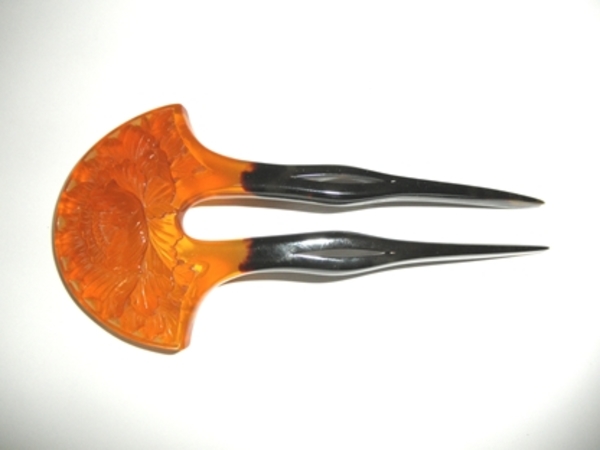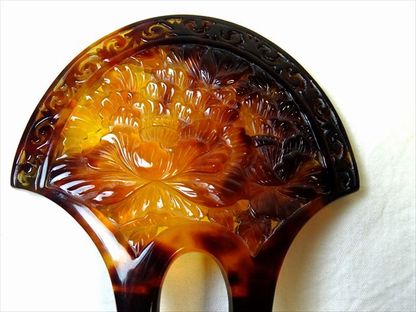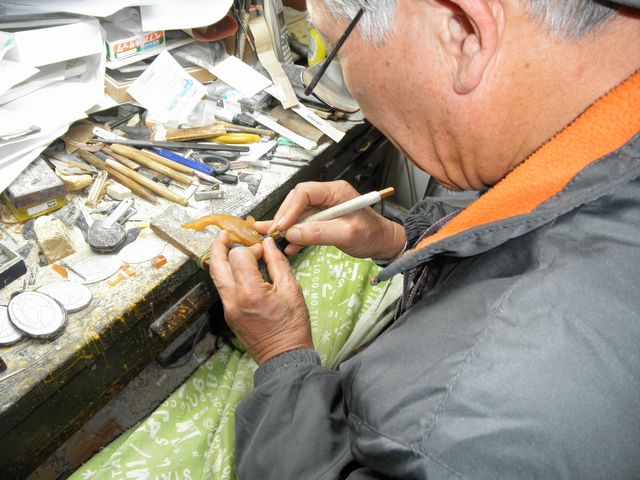 Photo provided by Nagasaki tortoise shell crafts Kizan
[http://www.bekko-kizan.com/]
Photo provided by Nagasaki tortoise shell crafts Kizan
[http://www.bekko-kizan.com/]
- Other crafts
- Nagasaki
Nagasaki tortoise shell crafts Nagasaki bekkou
Originally lower-class samurai's side job
Traditional craft sold around Japan
Description
What is Nagasaki tortoise shell crafts ?
Nagasaki tortoise shell crafts called Nagasaki Bekko in Japanese, are mostly produced in the city of Nagasaki or Isahaya in the Nagasaki prefecture. The shells used come from a type of sea turtle living around the Equator called Hawksbill turtle. During the Edo period (1603-1868), as there was a national isolation policy, foreign trade was only partially allowed in Nagasaki. This craft naturally developed in Nagasaki, as it was easier to import tortoise shells there. Highly-skilled artisans adjust the colors and thickness of the shells using elaborate and delicate techniques. Many accessories and small crafts are made with tortoise shell, but bigger and more impressive works such as treasure ships are also produced. As the CITES (the Convention on International Trade in Endangered Species of Wild Fauna and Flora) forbids international transactions of Hawksbill turtle now, tortoise shells cannot be imported anymore. Thus, Nagasaki tortoise shell works have become a rare and precious traditional craft.
History
 Photo provided by Nagasaki tortoise shell crafts Kizan
[http://www.bekko-kizan.com/]
Photo provided by Nagasaki tortoise shell crafts Kizan
[http://www.bekko-kizan.com/]
It is said that tortoise shell crafts were first imported from China during the Asuka period (538-710). Some old tortoise shell works are even stocked in the treasure house called Shosoin of the Todai-ji temple in Nara. Tortoise shells began to be imported to Nagasaki in the 17th century, and this lead to the start of the crafts. At the time, tortoise shells were thought to bring a long life, and hairpins and combs made of them were loved by wealthy families all over the country. However, these high-grade crafts were very expensive, and there was a ban against them at the end of the 17th century due to sumptuary laws. They were luxury items that common people were unable to purchase. In the 19th century, Japan began to open its ports to foreign countries, and more visitors from different countries made their way into Japan. Nagasaki tortoise shell crafts were very popular among these new visitors too. The artisans then researched ways to adapt their products to their new customers so they could easily be used abroad. Their wide range of items became popular, inside and outside of the country, and became recognized as a specialty product of Nagasaki.
General Production Process
 Photo provided by Nagasaki tortoise shell crafts Kizan
[http://www.bekko-kizan.com/]
Photo provided by Nagasaki tortoise shell crafts Kizan
[http://www.bekko-kizan.com/]
- 1. The design First, a sketch is made. There are many restrictions in the size and thickness of the materials as they are all natural.
- 2. Choosing the material Material appropriate for the design is chosen from Hawksbill turtle's carapace, nails or plastron.
- 3. Cutting The material is cut using a fret saw. The material is cut accordingly to the design while preserving the beautiful natural colors and patterns.
- 4. Scraping Any impurities or dirt are carefully removed using small knives or rasps to make the surface smooth.
- 5. Temporary fitting To prevent any misalignment in the piece, the parts to be joined are temporarily fit with red hot iron tongs before the next step.
- 6. Pressing By applying pressure to the material, the thickness is uniformed. Unlike other crafts, no glue is used, leading this technique to be called "the art of water and fire".
- 7. Iron pressing The processed shell is glued to a wooden base using egg whites and a hot iron.
- 8. Carving The shell is carved based on the design. This is a very delicate step that requires concentration to carve just the necessary thickness.
- 9. Polishing The shell is carefully polished to bring out a soft and beautiful shining amber color.
- 10. Assembling All of the pieces including metallic parts are assembled.
See more Other crafts
- Edo kiriko cut glass
- Koshu lacquered deer leather
- Kyo folding fans
- Marugame uchiwa fans
- Boshu uchiwa fans
- Gifu lanterns
- Yamaga lanterns
- Kyo uchiwa fans
- Tendo Japanese chess pieces
- Edo glass
- Edo patterned paper
- Yame lanterns
- Owari Cloisonné
- Fukuyama Koto (Japanese Harp)
- Kyo art preservation
- Banshu fly-fishing flies
- Woodblock prints
- Koshu hand-carved seals
- Edo Hyogu (Art Mountings)
- Edo tortoise shell crafts
- Etchu Fukuoka Sedge Hats
- Gifu Japanese Umbrellas
- Nagasaki tortoise shell crafts
- Nagoya Sekku Kazari
- Sanshin
- Tokyo Koto (Japanese Harp)
- Tokyo Shamisen































































































































































































































































































